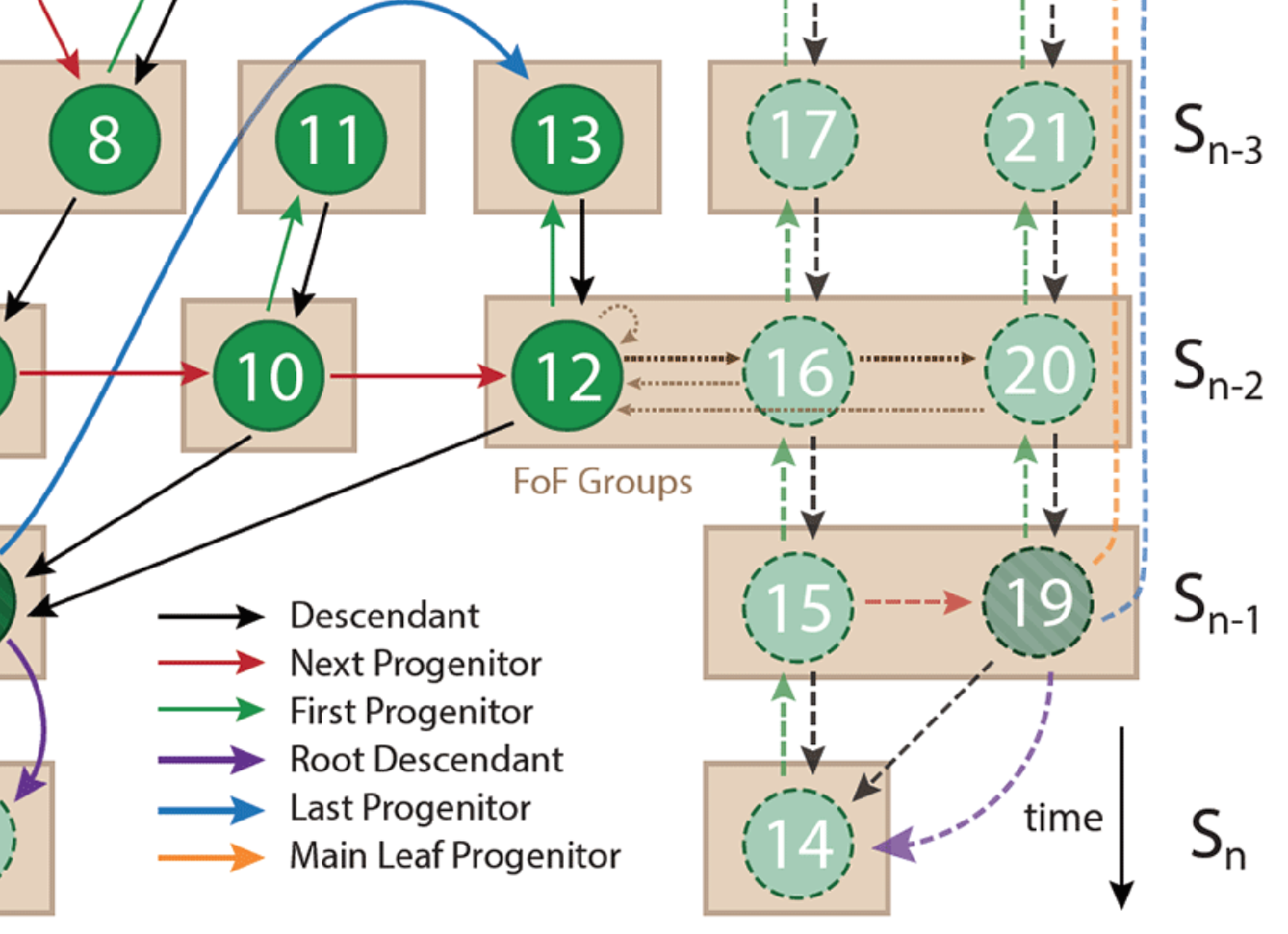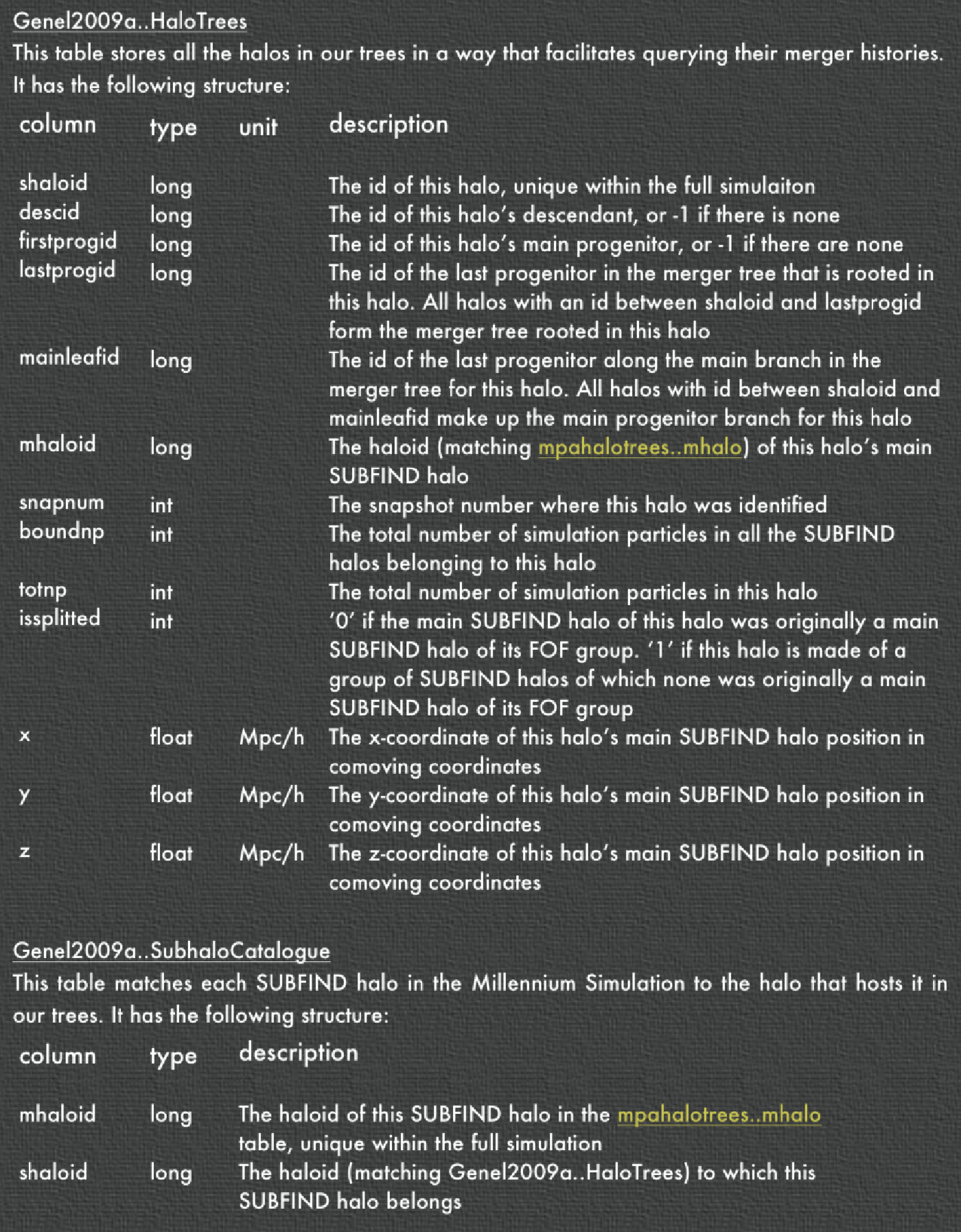The trees
Structure identification in the Millennium Simulation is done in two steps: first, the Friends-of-Friends (FOF) algorithm creates a catalogue of FOF-groups that are considered to be roughly virialised halos, and second the SUBFIND algorithm identifies subhalos in each FOF group. Merger trees were built from the subhalos and have been made publicly available by the German Astrophysical Virtual Observatory.
In order to study the merger rate of dark matter halos, rather than that of subhalos, new merger trees have to be built, but there is a plethora of ways to do that. In Genel et al. 2009 we describe an algorithm to build halo merger trees that are based on the subhalo merger trees. This algorithm, which we call the "splitting" algorithm, aims at preventing artificial effects that may arise from fragmentation and re-merging of halos. To do that, it splits some FOF groups into several fragments, each of which is considered to be an independent halo and made of at least one subhalo.
More details about building the trees, including a more detailed motivation for the "splitting" algorithm and an analysis of the halo merger rate, can be found in Genel et al. 2009.
Each halo has either one descendant or no descendants at all. This information is enough to define a merger tree. Nevertheless, to increase the usefulness of the trees, two other "pointers" are defined for each halo:
1) The main progenitor of the halo. This is usually the most massive direct progenitor ("A"). The only exception is cases where another direct progenitor ("B") has a direct progenitor of its own ("C") that is more massive than the most massive direct progenitor of the halo itself ("A"). In such cases, the less massive direct progenitor ("B") will be defined as the main progenitor of the halo.
2) The main subhalo of the halo. This is defined following De Lucia & Blaizot 2007, MNRAS, 375, 2, so that it is the subhalo with the "most massive history" behind it.
The database tables
Table Genel2009a..HaloTrees that is described below can be used independently for the merger trees of halos. However, the web application provides access to all the public tables of the Millennium Simulation as well, so that if additional data (e.g. halo velocities) is needed, combined queries can be executed. The structure of Table Genel2009a..HaloTrees is similar to the mpahalotrees..mhalo table of the subhalo trees, and more detailed documentation can be found in Lemson & Springel 2005 and here.

